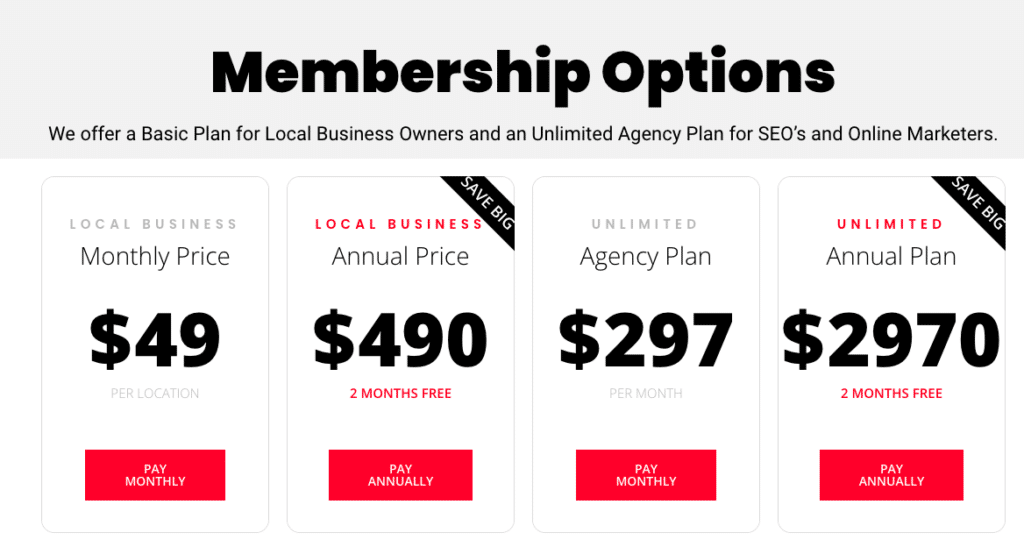Enhancing User Experience of Local Sites

When it comes to local businesses, having a strong online presence is crucial for success in today’s digital age. Local sites play a vital role in attracting and engaging potential customers, but all too often, they fall short in providing a seamless user experience. In this article, we will explore the importance of enhancing user experience on local sites and provide valuable insights on how businesses can achieve this goal.
Get your FREE 14 DAY TRIAL for over 300 local citations. Click below!

The Significance of User Experience
User experience (UX) refers to the overall experience a user has when interacting with a website or application. It encompasses various aspects such as ease of navigation, visual appeal, loading speed, and content relevance. A positive user experience not only keeps visitors engaged but also encourages them to take desired actions, such as making a purchase or contacting the business.
For local businesses, a well-designed and user-friendly website is essential for attracting and retaining customers. According to a study by Google, 50% of consumers who conducted a local search on their smartphone visited a store within a day. This highlights the importance of providing a seamless user experience on local sites to drive foot traffic and conversions.
Key Elements of a User-Friendly Local Site
Creating a user-friendly local site involves considering various factors that contribute to a positive user experience. Let’s explore some key elements that businesses should focus on:
1. Responsive Design
In today’s mobile-dominated world, having a responsive website design is crucial. A responsive design ensures that your site adapts to different screen sizes and devices, providing a consistent and optimized experience for users. According to Statista, mobile devices accounted for 52.6% of website traffic worldwide in 2020. Therefore, businesses must prioritize mobile optimization to cater to the growing number of mobile users.
2. Intuitive Navigation
Easy navigation is essential for users to find the information they need quickly. Businesses should ensure that their local sites have a clear and intuitive navigation menu, allowing visitors to easily explore different sections of the website. Implementing a search bar can also enhance user experience by enabling users to find specific information or products efficiently.
3. Fast Loading Speed
In today’s fast-paced world, users expect websites to load quickly. According to Google, 53% of mobile site visits are abandoned if a page takes longer than three seconds to load. To enhance user experience, businesses should optimize their local sites for speed by minimizing file sizes, leveraging browser caching, and using content delivery networks (CDNs).
4. Relevant and Engaging Content
High-quality and relevant content is crucial for engaging users and encouraging them to stay on your local site. Businesses should focus on creating informative and engaging content that addresses the needs and interests of their target audience. Incorporating visuals, such as images and videos, can also enhance the overall user experience and make the content more appealing.
5. Clear Call-to-Actions
Local sites should have clear and prominent call-to-action (CTA) buttons that guide users towards desired actions, such as making a purchase, booking an appointment, or contacting the business. CTAs should be strategically placed throughout the site and use compelling language to encourage users to take action.
Case Studies: Successful Implementation of User Experience Enhancements
Let’s take a look at two case studies that demonstrate the positive impact of enhancing user experience on local sites:
Case Study 1: XYZ Bakery
XYZ Bakery, a local bakery in a bustling city, noticed a decline in online orders despite having a visually appealing website. After conducting user research and analyzing website analytics, they identified several areas for improvement:
- Implemented a responsive design to cater to mobile users
- Streamlined the navigation menu for easier access to product categories
- Optimized image sizes and leveraged caching to improve loading speed
- Added customer testimonials and visually appealing images to enhance content
- Placed prominent CTAs on product pages and the homepage
After implementing these enhancements, XYZ Bakery saw a 30% increase in online orders within three months. The improved user experience played a significant role in attracting and converting customers.
Case Study 2: ABC Fitness Center
ABC Fitness Center, a local gym, aimed to increase membership sign-ups through their website. They identified the following areas for improvement:
- Redesigned the website with a responsive layout to cater to mobile users
- Simplified the navigation menu and added a search bar for easy access to classes and facilities
- Optimized website speed by compressing images and leveraging CDNs
- Created informative blog posts and workout videos to engage users
- Added prominent CTAs for membership sign-ups on relevant pages
As a result of these enhancements, ABC Fitness Center experienced a 20% increase in online membership sign-ups within two months. The improved user experience played a crucial role in attracting and converting potential gym members.
Conclusion
Enhancing user experience on local sites is essential for attracting and engaging potential customers. By focusing on elements such as responsive design, intuitive navigation, fast loading speed, relevant content, and clear call-to-actions, businesses can create a user-friendly website that drives conversions and foot traffic. Case studies like XYZ Bakery and ABC Fitness Center demonstrate the positive impact of user experience enhancements on local businesses.
Remember, providing a seamless user experience is an ongoing process. Regularly analyzing user behavior, conducting user research, and implementing improvements based on feedback can help businesses stay ahead of the competition and deliver exceptional user experiences. With the right strategies and tools, such as Citation Vault – a local citation service that automates 300 local citations for any business, businesses can enhance their online presence and attract more customers to their local sites.
Frequently Asked Questions

1. How does improving user experience on my local business listing site affect customer engagement?
Enhancing the user experience on your local business listing site can lead to increased customer engagement. A user-friendly interface makes it easier for customers to find the information they need, which can reduce bounce rates and encourage them to explore more of your offerings. Features such as responsive design, fast loading times, and easy navigation can significantly improve the customer’s interaction with your site. By making the user experience seamless, you can help ensure that customers will not only stay longer on your listing but also are more likely to convert into leads or sales.
2. What are the key user experience factors I should focus on in my local business listing to attract more customers?
Key user experience factors for local business listings include:
Mobile Responsiveness: With the increasing use of mobile devices to search for local businesses, your listing must perform well on smartphones and tablets.
Clear and Concise Information: Ensure that your NAP (Name, Address, Phone number) information is prominent and accurate. Include business hours, services offered, and pricing if applicable.
High-Quality Images: Visuals are crucial. Use high-resolution images to showcase your business effectively.
Customer Reviews: Display reviews prominently, as they serve as social proof and can greatly influence consumer decisions.
Call to Action (CTA): Direct users clearly on what to do next – whether it’s to make a call, place an order, or visit your website.
3. How can I ensure my local listing site is accessible to all users, including those with disabilities?
To ensure accessibility, follow the Web Content Accessibility Guidelines (WCAG). These include providing text alternatives for non-text content, making all functionality available from a keyboard for those who can’t use a mouse, and ensuring that users have enough time to read and use content. Also, make sure that your website is navigable and understandable to users with various disabilities. This includes proper color contrast, the ability to enlarge text, and the inclusion of ‘alt’ text for images. Not only is this practice inclusive, but it also potentially expands your customer base.
4. What role does page load speed play in user experience for local business listings, and how can I optimize it?
Page load speed is a critical component of user experience. Slow-loading pages can frustrate users, leading them to abandon your listing in favor of a competitor. To optimize load speed, compress images, minimize the use of heavy scripts and plugins, leverage browser caching, and consider a content delivery network (CDN) if your budget allows. Regularly testing your site’s speed using tools like Google PageSpeed Insights can help you identify and rectify issues that may be slowing down your site.
5. How often should I update my local business listing to ensure the best user experience?
Your local business listing should be updated regularly to ensure that all information is current and accurate, which is fundamental to a good user experience. Any time there are changes to your business operations, such as updated hours, new services, or changes in contact information, your listing should be updated promptly. Additionally, adding fresh content such as recent customer reviews or photos can keep your listing engaging and informative. A well-maintained listing can significantly improve customer trust and satisfaction.
For local citation businesses, these enhancements are not only about attracting more customers; they’re about offering a superior and inclusive experience that keeps users coming back. A focus on the user experience reflects your business’s commitment to customer service and can set you apart in a crowded local marketplace.
- Enhancing User Experience of Local Sites
- local business listings
- local canadian citations
- local citations






